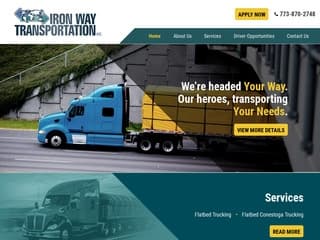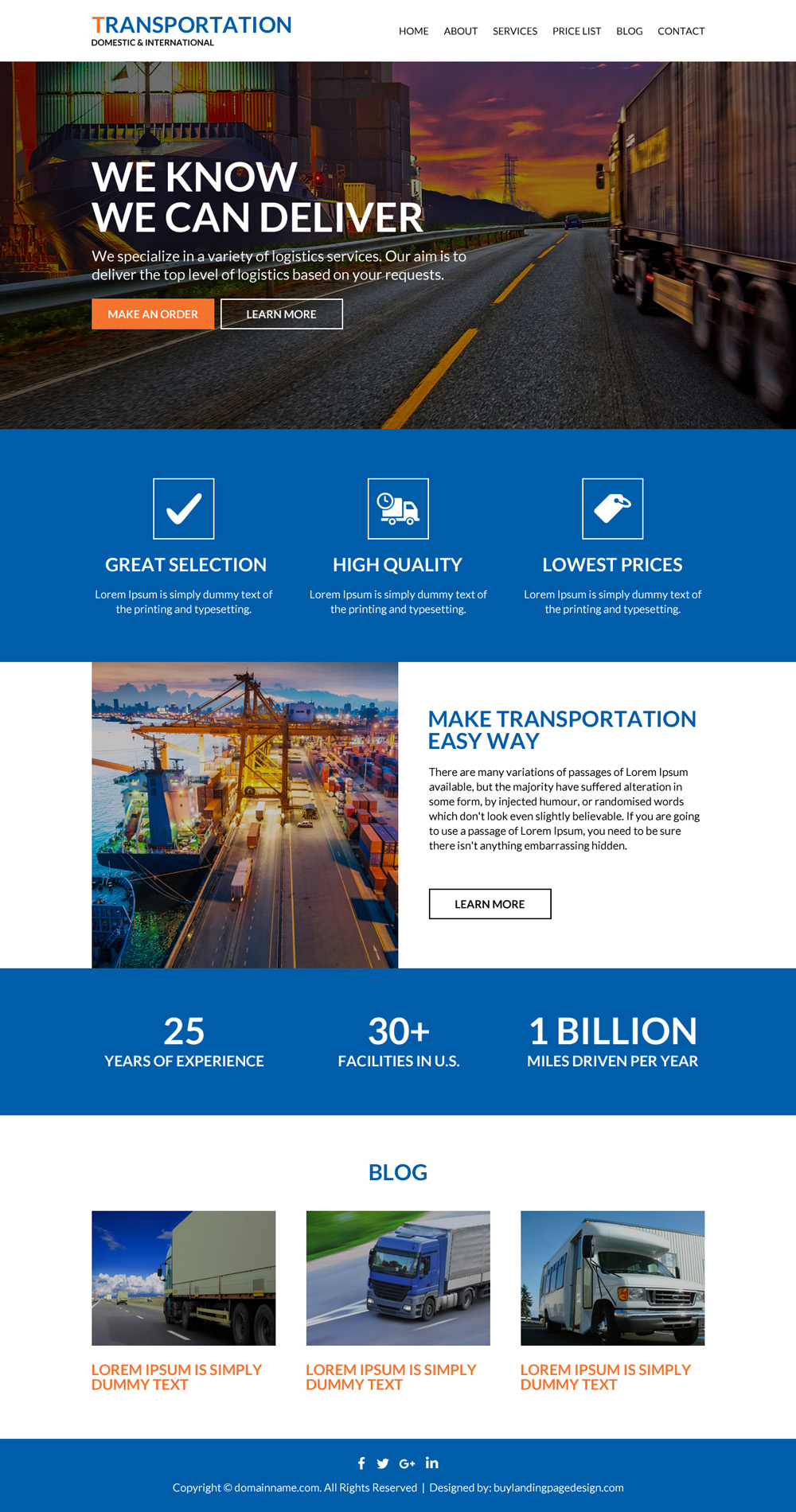Drive More Customers with Optimized transportation web design Strategies.
Wiki Article
Just How Specialized Transport Internet Style Helps Improve Client Involvement and Conversion
In today's affordable landscape, specialized transportation web layout plays an essential function in enhancing customer interaction and driving conversion rates. By concentrating on user-centric attributes, these internet sites not just streamline navigating yet also adjust flawlessly to different gadgets, guaranteeing accessibility for all customers. Additionally, the tactical assimilation of visual elements and clear call-to-action prompts can considerably affect individual actions. As we explore the vital components that add to an effective style, it comes to be apparent that recognizing these elements can bring about transformative results for businesses in the transportation field. What specific methods have proven most efficient?Importance of User-Centric Design
In today's digital landscape, a user-centric style is extremely important for specialized transportation web platforms - transportation web design. This approach focuses on the requirements and choices of customers, boosting their total experience while browsing intricate transport solutions. By concentrating on usability, accessibility, and intuitive navigation, companies can promote a feeling of trust fund and reliability among clients, which is important in the transportation industryUser-centric layout involves comprehensive research to understand the target audience's actions, inspirations, and obstacles. This understanding educates the growth of functions such as streamlined booking procedures, very easy accessibility to service details, and responsive consumer assistance. Customization can be integrated to cater to private user choices, leading to boosted involvement and complete satisfaction.
Executing a user-centric layout not only boosts the capability of transport web platforms yet additionally improves conversion rates. When customers discover a platform simple to navigate and receptive to their requirements, they are most likely to total deals and return for future services. Inevitably, a well-executed user-centric design adds to the total success of specialized transportation organizations by improving client loyalty and motivating repeat service.
Impact of Aesthetic Elements
While the capability of a specialized transportation internet system is necessary, the impact of visual elements can not be forgotten. A properly designed aesthetic design plays an essential function in capturing user interest and helping with details retention. Effective usage of shade, typography, and imagery not only boosts the visual appeal however additionally conveys brand identification and professionalism and trust.Aesthetic components, such as premium photos of transportation services, can evoke depend on and reliability, motivating possible customers to engage even more. Infographics and icons streamline intricate details, making it more digestible. This clearness can result in minimized bounce prices and raised time invested in site, both of which declare indicators of individual engagement.
Additionally, a regular aesthetic hierarchy guides users through the site seamlessly, making sure that critical information-- such as solution offerings, rates, and contact information-- is easily obtainable. This calculated plan aids to route possible customers toward preferred actions, such as completing a call kind or asking for a quote.

Mobile Responsiveness Advantages
The value of aesthetic elements reaches mobile responsiveness, which is progressively important in today's digital landscape. As even more individuals accessibility internet sites with mobile devices, a receptive design ensures that material is displayed efficiently throughout numerous screen dimensions. This flexibility not just enhances customer experience but likewise dramatically impacts client involvement and conversion prices.Mobile responsiveness enables specialized transport companies to satisfy click this the assumptions of a varied clients. Individuals are more probable to remain on a site that is simple to navigate on their mobile phones or tablets, resulting in longer session durations and decreased bounce rates. A mobile-friendly design builds credibility; customers are extra likely to count on and engage with a firm that offers itself well on all tools.
Furthermore, online search engine like Google prioritize mobile-optimized internet sites in their ranking formulas. transportation web design. Companies that spend in mobile responsiveness can boost their exposure and attract even more organic website traffic. This boosted exposure can convert into higher conversion prices, as potential customers are more probable to call or book solutions via a website that functions seamlessly on their mobile tools. Thus, mobile responsiveness is an important part of efficient website design in the specialized transport sector.
Streamlining Navigation Experience

A well-structured navigation experience is critical for specialized transport websites, as it directly influences user interaction and satisfaction. When potential clients visit these sites, they expect to find information quickly and effectively. A structured navigation system can substantially improve this procedure, assisting individuals effortlessly with different solutions, rates choices, and get in touch with info.
To accomplish optimal navigation, it is vital to categorize material logically. Utilizing a clear power structure-- such as key and second food selections-- assists users discern where to locate certain details without feeling overwhelmed. In addition, including drop-down menus can offer quick accessibility to subcategories, minimizing click deepness, which is crucial for maintaining user attention.
Moreover, a search feature enables users to bypass navigating entirely, accommodating those that understand precisely what they look for. Carrying out breadcrumb trails can better improve the user experience by supplying a visual path back to previous pages, reinforcing website structure.
Including mobile-friendly navigation is just as essential, as many customers access specialized transport sites on their smart devices. By prioritizing an instinctive and responsive layout, companies can make certain that their site effectively serves varied user requirements, inevitably enhancing customer engagement and conversion prices.
Incorporating Call-to-Action Techniques
Efficient call-to-action (CTA) approaches are important for leading users toward wanted end results on specialized transportation web sites. These strategies not only improve customer engagement however additionally substantially boost conversion Your Domain Name prices. CTAs ought to be purposefully put throughout the website, ensuring they are quickly visible and obtainable.
Incorporating necessity in CTAs, such as limited-time deals or unique bargains, can even more motivate users to act without delay. A/B testing different CTA designs and positionings can offer valuable insights right into what resonates best with the target audience.
Additionally, guaranteeing resource that CTAs are mobile-friendly is paramount, as a considerable portion of individuals might access the site using mobile phones. transportation web design. By thoughtfully incorporating these strategies, specialized transport websites can successfully lead users with the conversion channel, ultimately bring about increased client involvement and successful results
Verdict
In verdict, specialized transportation internet style substantially boosts customer interaction and conversion by focusing on user-centric functions, integrating impactful aesthetic elements, and making certain mobile responsiveness. Structured navigating experiences and well-integrated call-to-action methods better add to a seamless user journey.Report this wiki page